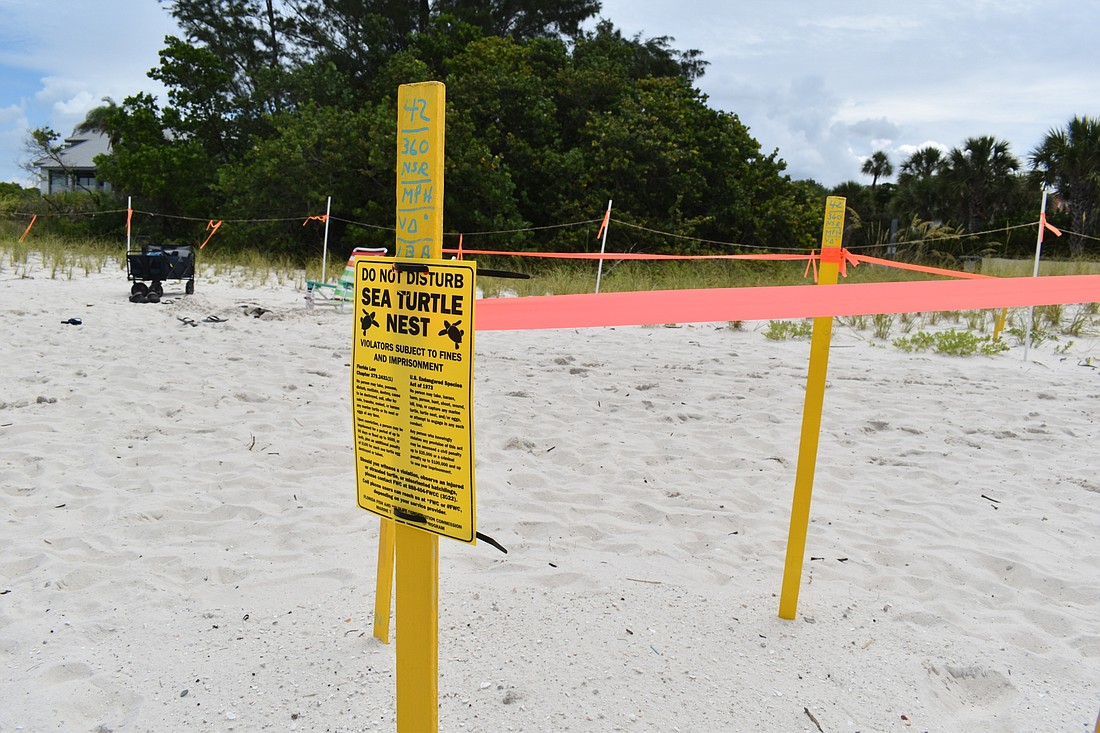- November 24, 2024
-
-
Loading

Loading

Not a satellite system, computer simulation or mathematical equation can do what a small army of scientists and volunteers do each summer on about 35 miles of beach from Longboat Pass to Venice.
Literally every sea turtle nest and false crawl in the 2019 season’s record-setting final tally is a hand-counted statistic.
On Longboat Key, the 1,342 nests recorded from April 26 (the season doesn’t officially start until May 1) until the end of October were recorded by volunteers with Longboat Key Turtle Watch, an organization that operates alongside Mote Marine scientists.
“It’s a great organization,’’ Turtle Watch Vice President Cyndi Seamon said. “And from a conservation effort for sea turtles it’s great. But everything we do impacts the environment. It helps the shorebirds. It helps us.”
And make no mistake, there was a lot of counting to be done, and not just on Longboat Key. Record numbers of turtle nests were recorded virtually everywhere. Researchers also got a chance to observer a rare leatherback turtle on four occasions – twice on Siesta Key and once each on Casey Key and Venice.
Read: Turtle Watch volunteers see unveiling of Trash, a turtle sculpture made of beach discards
In total, 4,926 loggerhead nests were spotted along the area’s beaches, 182 green turtle nests and four leatherbacks.
“Every single one of the numbers on our site represents an actual nest that somebody physically saw and documented,’’ said Mote Senior Biologist Melissa Bernhard. “It's not an extrapolation of any sorts.”
Bernhard said numbers are hard to compare year over year, because the same turtles don’t return in 12-month cycles, but the upswing over the last decade is encouraging. If 2018’s red tide outbreak ends up having a detrimental effect on nesting, that might not be known for a year or two.
“So for our area, especially the last decade, 10 or 11 years, we've seen a kind of an exponential increase in both the loggerhead and the green turtle nesting numbers in our area,’’ she said. “And those are really our two main species.’’
Loggerheads traditionally make up about 99% of the nesting in Southwest Florida, Bernhard said.
About 30 years ago, with the advent of the federal Endangered Species Act, turtles thrived and more readily matured into young-bearing age. Depending on the species, that's anywhere from 15 to 25 years of age.
The results of the federal act's protections and higher awareness could be driving the upswing. But every year is different, Bernhard said.
“That means, the establishment of this was a great thing for the species,’’ she said. “But it's hard to continue to know if everything we're doing is helping because we may not see those effects for another 30 years.’’
One element that’s part of that uncertainty is the possibility of climate change. Bernhard said the gender of hatchlings is determined in large part by temperature – cooler temperatures result in males, warmer result in females.
“If they're all only producing females, what does that mean to a population and something we can't know for another 20 years.’’
One thing is certain, though. Casey Key seems to be a favorite among sea turtles. Why? Well . . .
"We don't know what necessarily attracts them or detracts them from certain areas,'' Bernhard said. "But we do know that Casey, it's a very dark beach in the summer. So those residents are not here or out on the beach and some days are much less likely to be disturbed by people or lights or cars driving by or that kind of thing. So I think that may have something to do with it.
"But again, I'm not actually a turtle, so it's really hard to know for certain.''